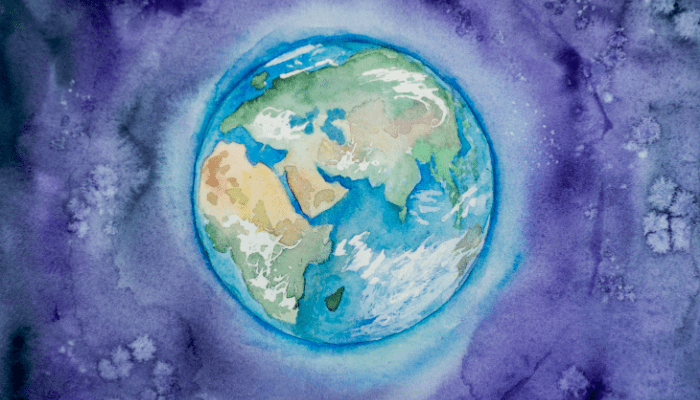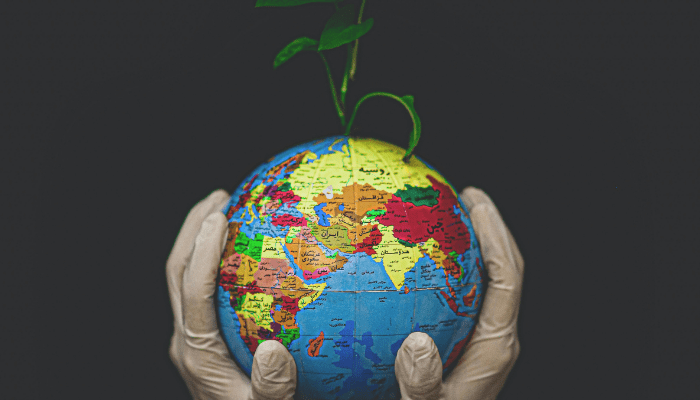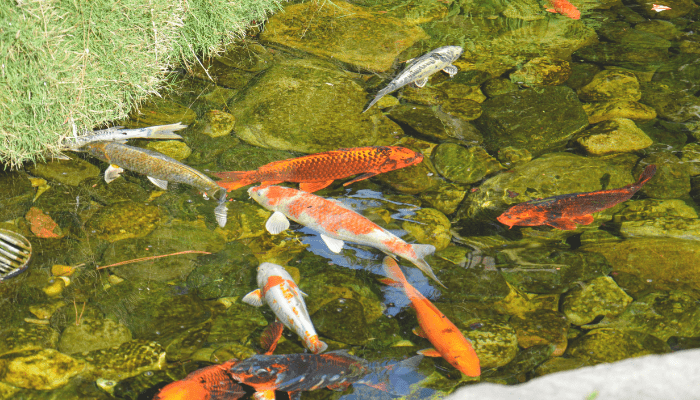“It’s not your planet, it’s just your turn.” That quote stuck with me the first time I read it. Simple. Sharp. And right on the money.
Every April 22, more than a billion people come together to celebrate Earth Day. It’s the world’s largest secular civic event, and somehow, it still flies under the radar in too many circles. You might see a few trees planted, some reusable water bottles flexed on Instagram, maybe a corporate sustainability pledge that looks suspiciously like a copy-paste from last year.
But Earth Day? It’s not just a PR moment. It started as a protest. A movement. A full-blown, sweaty, hand-painted-sign, skip-class-and-march kind of event.
And in 2026, it matters more than ever.
This guide doesn’t just tell you what Earth Day is. It shows you how we got here, what’s actually happening in 2026, and how you can be part of the solution without quitting your job to live off-grid in a yurt. (Unless you’re into that. In which case, send photos.)
You’ll get facts you didn’t hear in school. The origin story that kicked it all off. And real, doable actions because clicking “like” on a climate meme just doesn’t cut it anymore.
Let’s dive in. The planet’s calling, and spoiler: it’s not just asking for thoughts and prayers.

Key Takeaways
- Earth Day is celebrated every year on April 22.
- The first Earth Day launched in 1970 with over 20 million participants.
- Over 1 billion people take part globally through events and actions.
- Activities range from tree planting to policy advocacy and energy audits.
- Earth Day is a launchpad for year-round environmental action.
- Everyone can contribute, from small daily habits to large community efforts.
What Is Earth Day?
Earth Day is the annual global mic-drop reminding us we only get one planet and we’re not doing a great job keeping it clean. It happens every year on April 22, and it’s dedicated to raising awareness and driving action around environmental protection. Think of it as the planet’s birthday, except instead of cake, we bring reusable bags and start composting.
More than just a feel-good event, Earth Day is a rallying cry. It’s where climate scientists, students, CEOs, teachers, parents and even that neighbor who still waters their lawn during a drought are invited to pause and ask: what can we do better?
When Is Earth Day?
Circle it: April 22. Every year. Rain, shine, global pandemic, it’s happening.
Earth Day isn’t about the date. It’s about the direction. And this year’s theme, “Our Power, Our Planet”, was a call for tripling clean energy by 2030. Lofty? Sure. Necessary? Absolutely.
Whether you’re planting a garden, switching to solar, or just finally figuring out how to recycle properly, April 22 is your day to start.
Who Started Earth Day?
Let’s rewind to 1970. The air was thick with smog, rivers were literally catching fire (looking at you, Cuyahoga), and the term “climate change” wasn’t even in the lexicon yet.
Enter Senator Gaylord Nelson, who had the radical idea of organizing a nationwide environmental teach-in. Think less TED Talk, more grassroots rebellion. With the help of activist Denis Hayes, the first Earth Day mobilized over 20 million Americans. That’s nearly 10% of the U.S. population at the time, out on the streets, demanding environmental reform. And it worked.
Laws were passed. The EPA was born. And Earth Day went from one-time protest to a global tradition.

The History of Earth Day
The first Earth Day on April 22, 1970 was sparked by rising pollution, an oil spill off the coast of Santa Barbara, and growing frustration with political inaction. It united people across political and social lines like farmers, urban students, Republicans, Democrats, and even some hesitant corporations. It was the first time the environment had become a national political issue.
The event was so successful that it led to the formation of the Environmental Protection Agency (EPA) and the passage of foundational laws: the Clean Air Act, Clean Water Act, and Endangered Species Act. These laws didn’t just pass, they reshaped public health, industrial standards, and conservation efforts across the U.S.
In 1990, Earth Day went global. Over 200 million people in 141 countries participated. That international momentum helped set the stage for the 1992 UN Earth Summit in Rio de Janeiro, one of the first global meetings to address climate change.
By 2000, the internet became a key mobilization tool. Earth Day 2000 focused on clean energy and was marked by both online campaigns and on-the-ground protests.
In the 2010s, plastic pollution and climate justice gained center stage. Earth Day became a platform for youth-led climate movements, Indigenous land rights, and large-scale community cleanup projects.
And in 2020, Earth Day turned 50. Despite COVID-19 lockdowns, it shifted online and still united millions through virtual events, teach-ins, and livestreams. It proved that the movement could adapt and thrive, no matter the challenge.

Earth Day Facts You Probably Didn’t Know
- Earth Day is the largest secular civic event in the world. Bigger than New Year’s Eve, if you measure it by collective action.
- It inspired the Clean Air Act, Clean Water Act, and the Endangered Species Act. That’s a solid legacy.
- The name “Earth Day” was almost “Environmental Teach-In.” Not exactly slogan material.
- More than 1 billion people now participate in Earth Day activities each year. That’s roughly one in eight humans on Earth.
- Some countries observe Earth Day on the spring equinox, but April 22 is globally recognized as the main event.
Earth Day 2026: What to Expect
Looking ahead to Earth Day 2026, momentum is building. The focus is expected to stay aligned with clean energy, but with increased pressure on governments to deliver actual policy shifts, not just promises.
New global reports on emissions and climate resilience will likely shape the conversation. Expect to hear more about environmental equity, climate adaptation, and sustainable infrastructure.
Mark your calendar for April 22, 2026, and start thinking now about how your workplace, school, or community can raise the bar.

Earth Day Activities That Aren’t Boring
If “Earth Day activity” makes you think of coloring sheets or picking up gum wrappers then think bigger.
Plant something. A tree, a windowsill herb garden, native wildflowers. Anything green.
Go meatless for the day (or the week). Agriculture accounts for a huge chunk of emissions. Your lunch matters.
Host a zero-waste lunch at work. No disposables, no plastic wrap, no excuses.
Audit your energy use. Get real about your electricity bill. Replace bulbs. Unplug things. Consider solar.
Clean up your local park, trail, or beach. Bonus points if you bring a friend and post the before/after.
Watch a documentary. “Kiss the Ground,” “The Biggest Little Farm,” or anything narrated by David Attenborough. Let it hit you in the climate gut.
Vote with the planet in mind. Local elections matter. Policies matter. Leaders who actually believe in science? They really matter.
Talk about it. Post about Earth Day, host a dinner conversation, share what you’re doing and why. Change spreads when it’s contagious.
How to Get Involved After April 22
Earth Day isn’t a one-day detox. It’s a launchpad.
Join a local climate group. Support businesses with real sustainability goals. Push your workplace to switch to green energy providers. Show up to town hall meetings. Cut down on flying. Make your home more efficient. Sign petitions. Read up. Keep learning.
And above all: keep going. Sustainability isn’t a destination. It’s a practice.
If you’ve made it this far in the article, you’re probably already onboard. So don’t wait for Earth Day 2026.
Keep the momentum. Keep the pressure on. Keep showing up for the only planet we’ve got.
Conclusion
Let’s be blunt: Earth Day isn’t about hugging trees. It’s about making noise, making change, and making it last.
Whether you lead a team, a classroom, a family, or just your own recycling bin, you have leverage. Real leverage. Because this movement doesn’t need a million perfect environmentalists. It needs millions of people doing a few things better.
Skip the plastic. Challenge your office to go paperless for a week. Walk instead of drive. Sign a climate petition. Plant a damn tree. Your actions scale, especially when you invite others in.
Earth Day isn’t just a commemoration. It’s a check-in. A gut-check. A chance to ask: Are we still asleep at the wheel, or are we finally gripping it with both hands and driving somewhere worth going?
So don’t let April 22 pass you by like another calendar holiday.
Make it personal. Make it loud. Make it count.
Because it’s not just Earth Day.
It’s your turn.
Want to turn Earth Day momentum into year-round impact? Oásis Biosistema helps you design outdoor spaces that support biodiversity, reduce waste, and reconnect you with nature.
FAQ
Is April 22 always Earth Day?
Yes, Earth Day is celebrated every year on April 22. Since its first observance in 1970, April 22 has been the fixed date for raising global awareness about environmental issues, climate action, and sustainability efforts across the world.
What is the theme of 2025 Earth Day?
The official theme of Earth Day 2025 was “Our Power, Our Planet.” It focused on accelerating the transition to clean energy by tripling global renewable capacity by 2030. The theme highlighted the power of collective action and the urgent need for bold climate solutions.
What should we do for Earth Day?
For Earth Day, you can plant trees, reduce waste, support clean energy, join local cleanups, or educate others about climate change. Even small actions like using reusable bags or voting for climate-friendly policies can make a big impact. Earth Day is a chance to act, not just reflect.
Who founded Earth Day?
Earth Day was founded by U.S. Senator Gaylord Nelson in 1970. He was inspired to create a national environmental movement after witnessing a major oil spill in California. The first Earth Day mobilized over 20 million Americans and led to the creation of key environmental laws.



